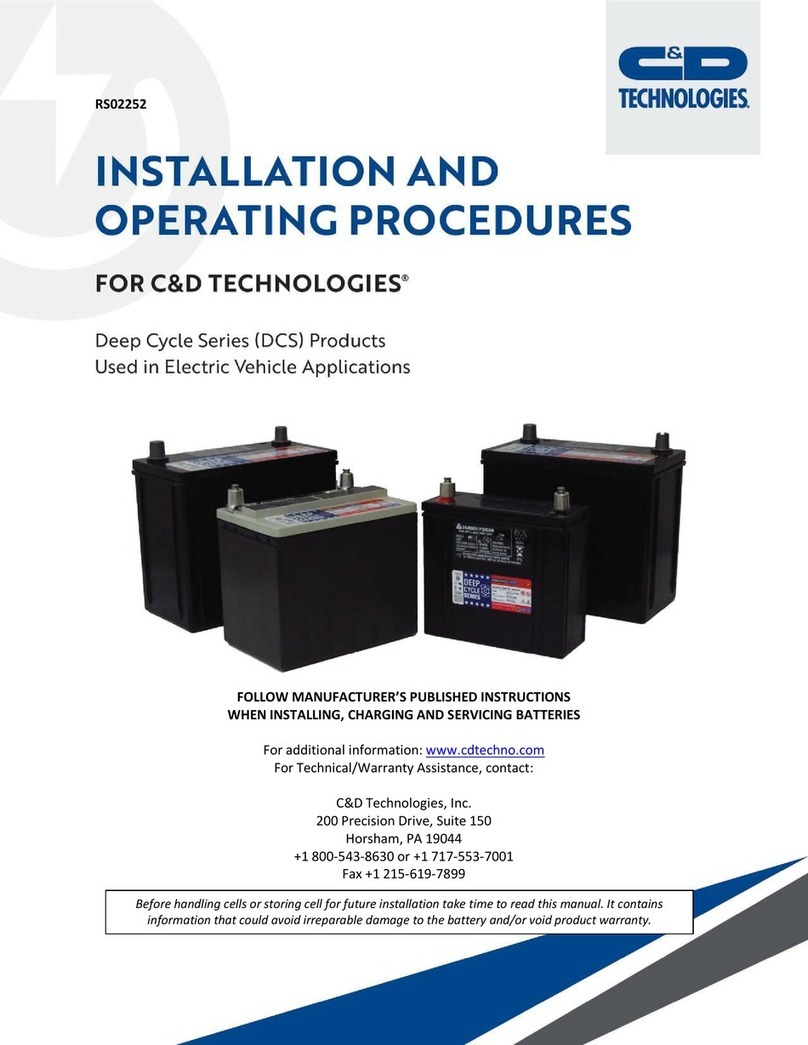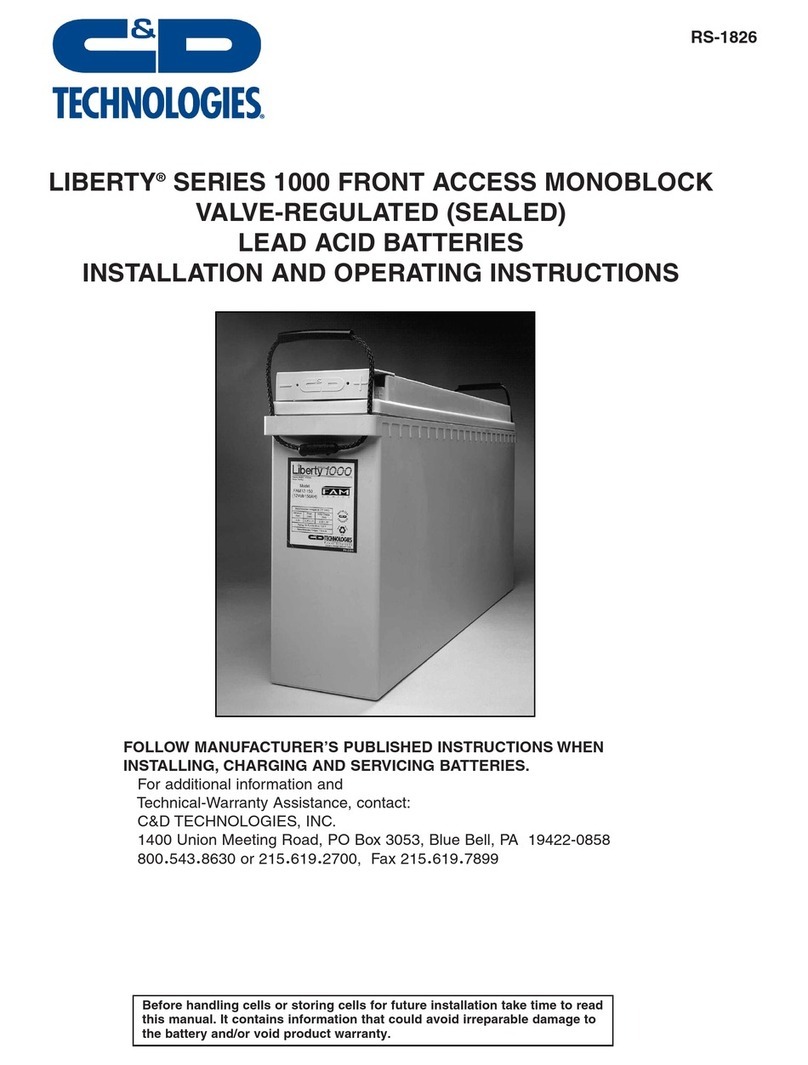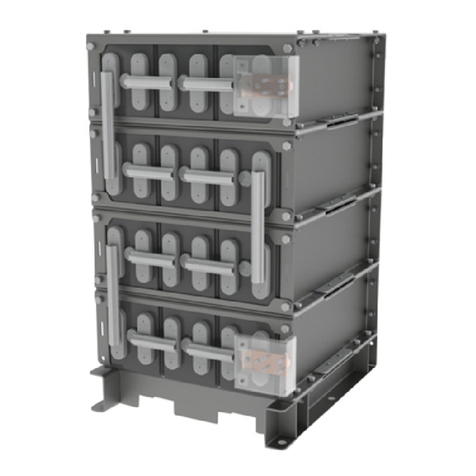
Series +24VDC connection of individual front access batteries
Step 1. If installing in a multiple tier rack or cabinet arrangement, always begin with the lowest shelf,
string A & B, place each the individual front access batteries on the shelf (typically 4 per level) with
approximately 1/2 inch spacing between the individual units. All the batteries should be placed with terminals
to the front of the rack / shelf. Remove and save terminal protectors.
Step 2. If supplied by the rack/cabinet manufacturer, place a safety shield in the center of the tray between
adjacent 24 volt battery strings.
Step 3. C&D recommends, prior to connection of inter-unit bus bars and lugged cables, the battery terminals and
all contact surfaces should be neutralized, cleaned, lightly brushed with a brass bristle brush or scotch brite type
pad and lightly coated with protective No-Ox-Id terminal grease.
Step 4a. Starting at the battery on the far right of the tray/shelf, which is to be the positive (+) output, label it as
number 1 and then label the adjacent battery to the left as battery number two, string A. Repeat the numbering
procedure for the adjacent string (next two batteries to the left), string B.
Step 4b. If more than two 24 VDC strings is within the enclosure, number these batteries the same way.
Identify the bottom tray as string A and B with the strings above as string C and D and so on
Step 5. Using the provided inter-unit bus bar and hardware (bolt and washer), connect between String A,
battery 1’s negative (-) terminal to String A, battery 2’s positive (+) terminal as shown in Figure 5. Tighten bolt
washer assembly hand tight.
Step 6. Torque each of the above bolt washer assemblies as per the inch-pound specifications in Table 3 for the
appropriate product.
Step 7. Following the rack or cabinet manufacturers cabling guidelines to attach the lugged power lead
connections to positive (+) of String A, battery 1 and negative (-) of String A, battery 2 terminals verifying
proper polarities are observed.
Step 8. Torque each of the above bolt washer assemblies as per the inch-pound specifications in Table 3 for the
appropriate product.
Step 9. Repeat above steps for String B and each of any remaining battery strings.
Step 11. Install all protective terminal covers and use a utility knife or diagonal cutter to trim the cover as
needed allowing for proper cable routing.
Step 12. Verify charging equipment is set for proper float voltage of 2.25 to 2.30 volt per cell at 77°F at the
battery terminals (27 to 27.6 VDC for a nominal 24 volt battery).
.
Parallel Connection of individual strings of batteries
C&D recommends each individual battery string be cabled separately to a common junction point or box.
Each
string may also contain a separate fuse or disconnect switch
to facilitate maintenance. The parallel
connections should be completed
only when the charger and load are not
connected to the battery output
circuit or battery string voltage should be matched to within 0.5 volts before the connection is made and
should be performed only by qualified technicians familiar with live battery connections.
The battery
strings must not be ''daisy
chained'' in parallel.
RS02046/0514/CD 6 www.cdtechno.com






























